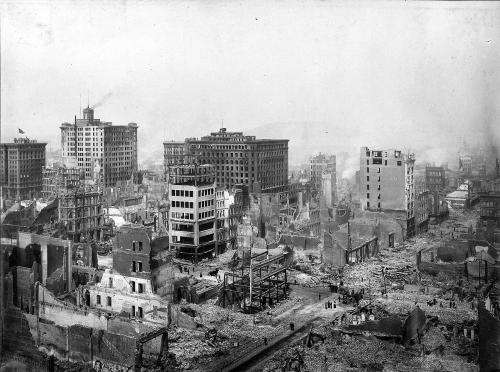Geologist outlines earthquake "time bombs" in a forthcoming book

An emeritus Oregon State University geologist, who was one of the first scientists to point to the possibility of a major earthquake in the Pacific Northwest, outlines some of the world's seismic "time bombs" in a forthcoming book.
One of those time bombs listed, in a segment he wrote last year, was Nepal where on April 25, an earthquake estimated at magnitude 7.8 struck the region, killing more than 7,500 people and injuring another 14,500.
Robert Yeats' prescience is eerily familiar.
Five years ago, Yeats was interviewed by Scientific American on earthquake hazards and outlined the dual threats to Port au Prince, Haiti, of poverty and proximity to a major fault line. One week later, that time bomb went off and more than 100,000 people died in a catastrophic earthquake.
When the Scientific American reporter called Yeats after that seismic disaster to ask if he had predicted the quake, he said no.
"I could say where the time bombs are located – large, rapidly growing cities next to a tectonic plate boundary with a past history of earthquakes, but I had no way of knowing that the bomb would go off a week after my interview," he said.
Fast forward to 2015 – Yeats has completed a new book, "Earthquake Time Bombs," which will be published later this year by Cambridge University Press. In that book, he identifies other time bombs around the world; one is a region he has visited frequently in the past 30 years – the Himalayas, including Kathmandu, Nepal, a city of more than a million people.
Yeats points to several areas around the worlds where large cities lie on or adjacent to a major plate boundary creating a ticking time bomb: Tehran, the capital of Iran; Kabul in Afghanistan; Jerusalem in the Middle East; Caracas in Venezuela; Guantanamo, Cuba; Los Angeles, California; and the Cascadia Subduction Zone off the northwestern United States and near British Columbia.
"These places should take lessons from the regions that already have experienced major earthquakes, including Nepal," said Yeats, who is with OSU's College of Earth, Ocean, and Atmospheric Sciences.
Like Port au Prince, Kathmandu lies on a tectonic plate boundary – the thrust fault between the high Himalayas and the continent of India to the south. The plate began its northward movement 50 million years ago, Yeats said, and is progressing at the rate of about two-thirds of an inch a year. As the plate is forcing its way beneath Tibet, it is triggering periodic earthquakes along the way.
"It takes time to build up a sufficient amount of stress in these systems, but eventually they will rupture," Yeats said. "The 2015 Nepal quake was, unquestionably, a disaster with losses of life in the thousands. But it could have been worse."
"With the assistance of an American non-profit seismology group, the city of Kathmandu created a disaster management unit and a National Society for Earthquake Technology that established committees of citizens to raise awareness and upgrade buildings, especially public schools," Yeats pointed out. "Other 'time bombs' would be wise to do the same."
Making buildings more earthquake-resistant is imperative for cities near a fault, yet economics often preclude such measures. Yeats said some of the greatest losses in the Nepal quake took place in United Nations World Heritage sites of Bhaktapur and Patan, where ancient buildings had not been strengthened.
"We are not able to predict an earthquake, but we can identify potential trouble," Yeats said. A seismic gap in the Himalayas was identified years ago by the late Indian seismologist K.N. Khattri in between western Himalaya of India and Kathmandu, where a magnitude 8.1 quake hit in 1934, he pointed out. The earthquake on April 25 struck within Khattri's seismic gap, Yeats noted.
The 1934 earthquake killed an estimated 20 percent of the population of Kathmandu Valle, some 30,000 people. The population there was much smaller than it is today.
"The 1934 epicenter apparently was east of the city, whereas the epicenter of April 25's earthquake was to the west, meaning that the two earthquakes may have ruptured different parts of the plate-boundary fault," Yeats said.
Earlier earthquakes that damaged Kathmandu struck in 1833 and 1255. The location and magnitude of those two quakes are uncertain.
"Videos of this year's earthquake focused on damaged and destroyed buildings and many of these were old historical buildings that had not been upgraded," Yeats said. "Photos also showed new buildings that did not appear to be damaged. There's a lesson there."
Provided by Oregon State University



















